Text
The Pila Marker
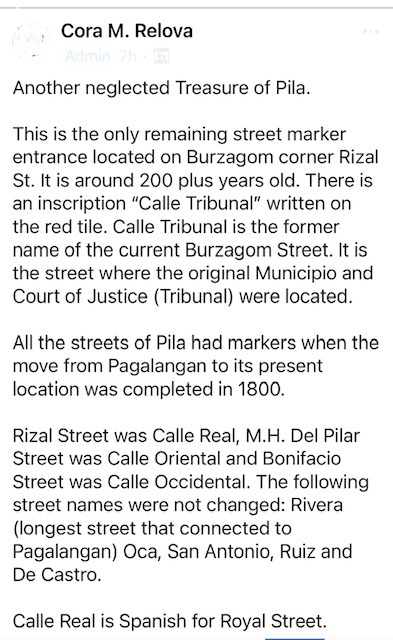
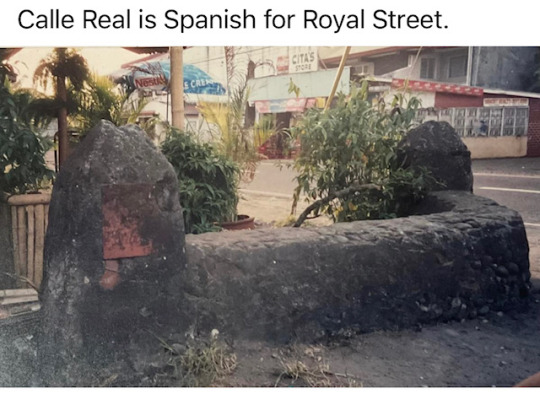
Images and info from Cora Relova of the Pila Historical Society Foundation.
#pilalaguna#pila laguna#pila laguna history#philippine history#pila laguna town#pila laguna museum#pila laguna church#pila laguna philippines#pila laguna ancestral houses#pila laguna heritage houses
0 notes
Text
Corazon Rivera Ancestral House: Furniture 2
Antique furniture in the Corazon Rivera Ancestral House, Pila, Laguna. Images from Cora Relova of the Pila Historical Society Foundation.
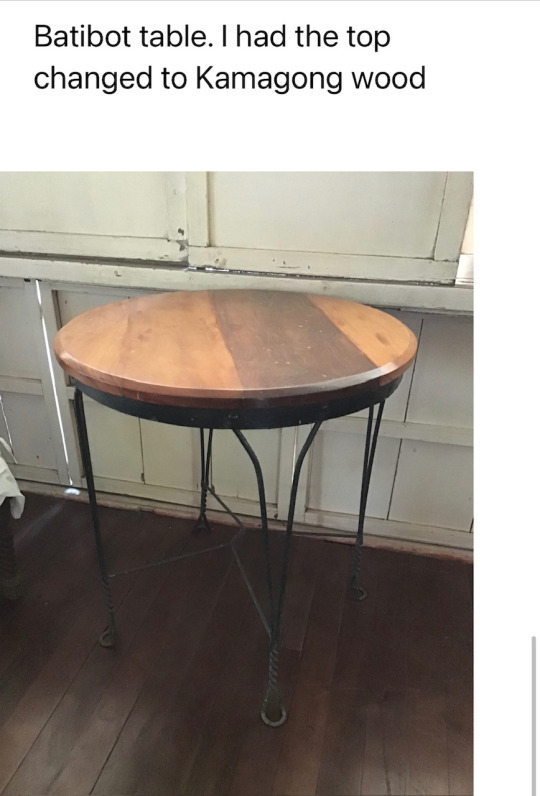
Side Table
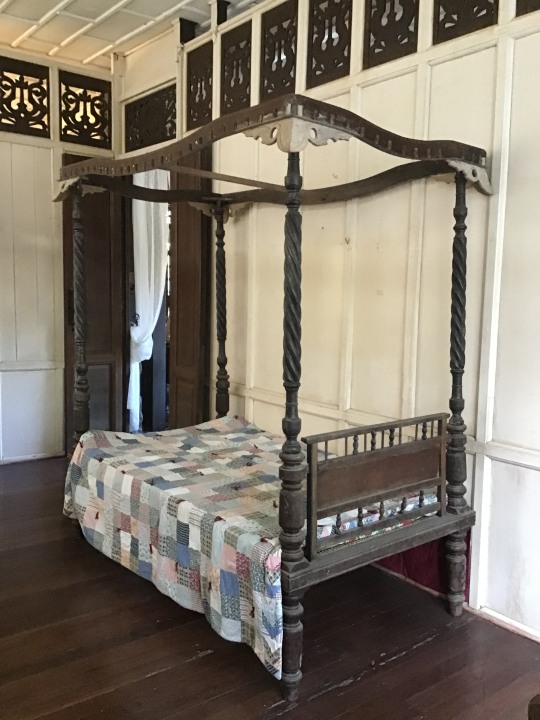
Narra antique bed. Lola Loring (Loreto Del Mundo, Corazon Rivera’s daughter) bought this. Probably 1920’s.
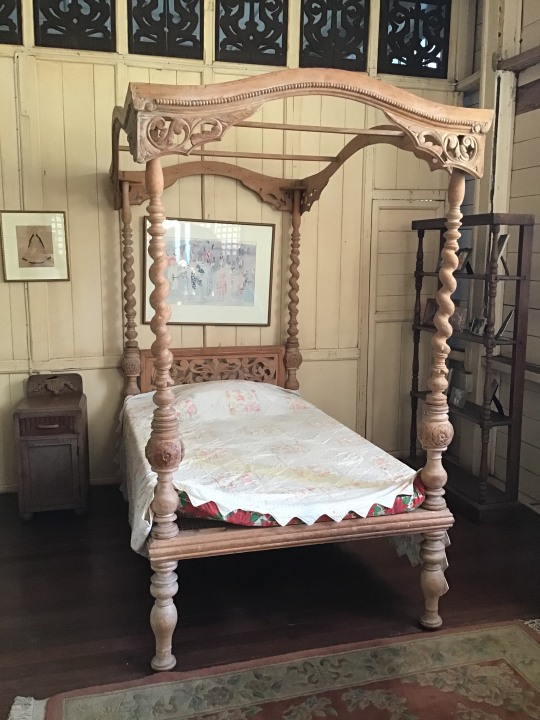
Narra bed of Lola Kikay, mother of Lola Azon (Corazon Rivera). Late 1800’s. Corazon Relova, her granddaughter, was born on this bed.
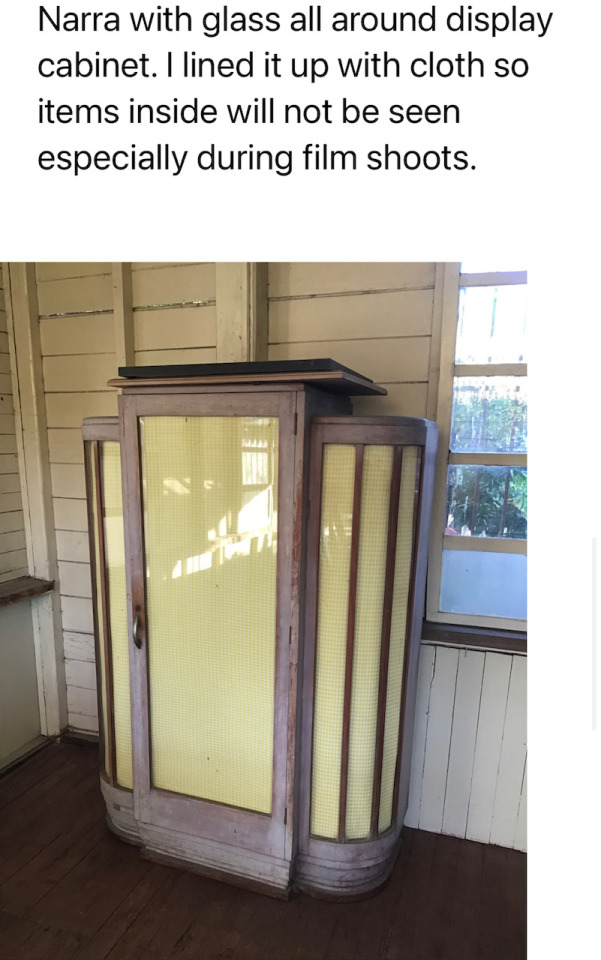
Narra Glass Cabinet
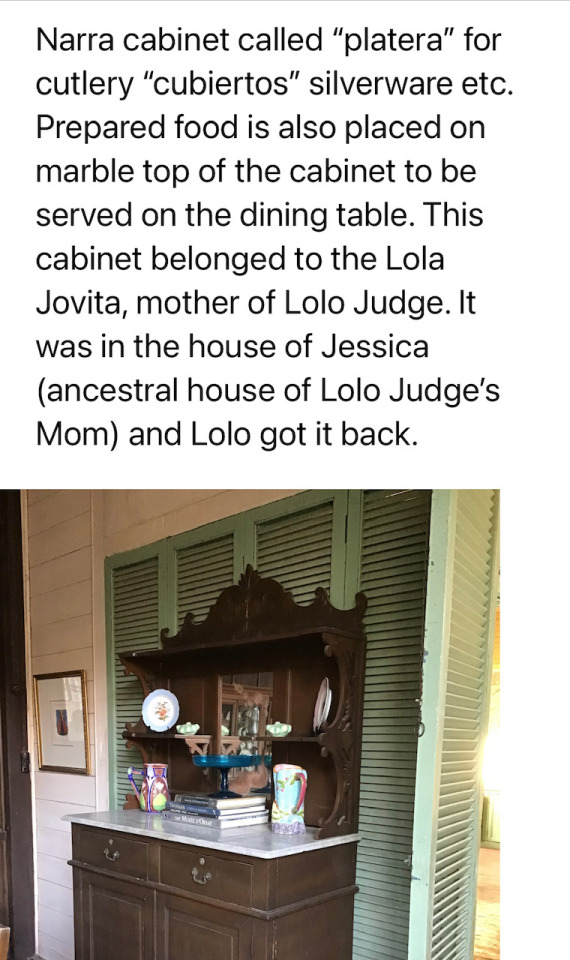

Platera (for plates, cutlery)

Narra cabinet. 1950’s. Lola Loring (Loreto Del Mundo, Corazon Rivera’s daughter) bought it in Ermita, Manila

Lola Loring’s (Loreto Del Mundo, Corazon Rivera’s daughter) Narra cabinet from her mother.

Camagong cabinet. It belonged to Lola Punday who is the grandmother of Lola Azon (Corazon Rivera). Probably close to 200 years old.
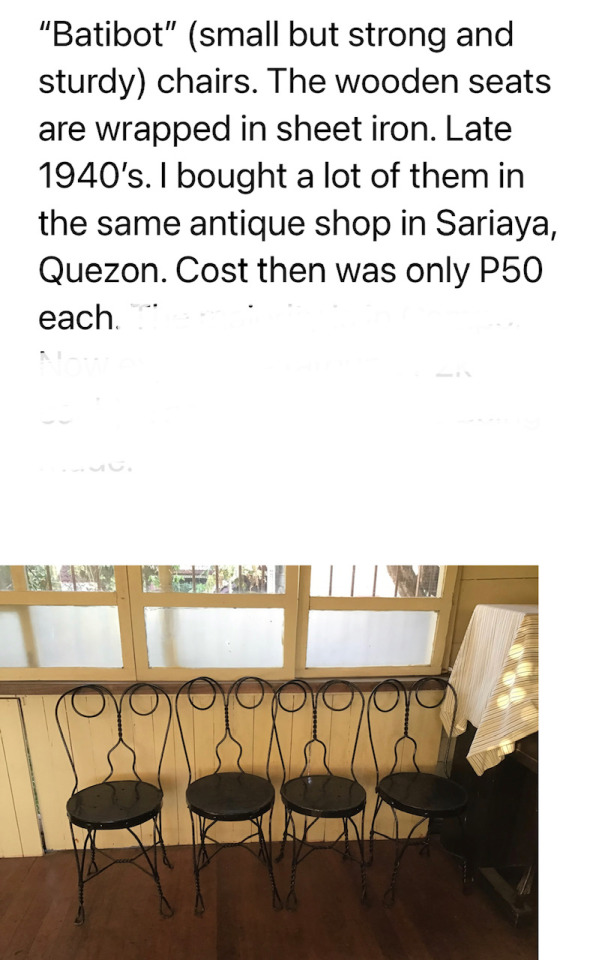
Batibot Chairs


(Corazon Rivera) Lola Azon’s Narra cabinet. Probably 130 years old.
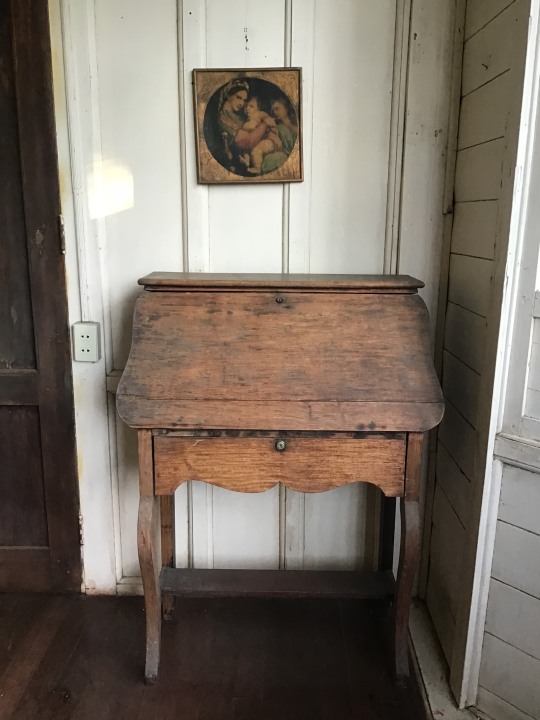
1940s Narra Desk
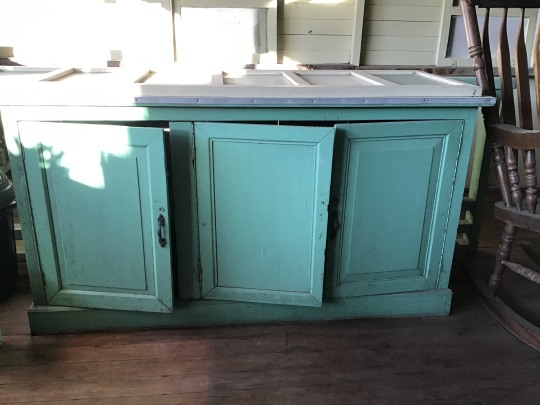
1960’s kitchen cabinet
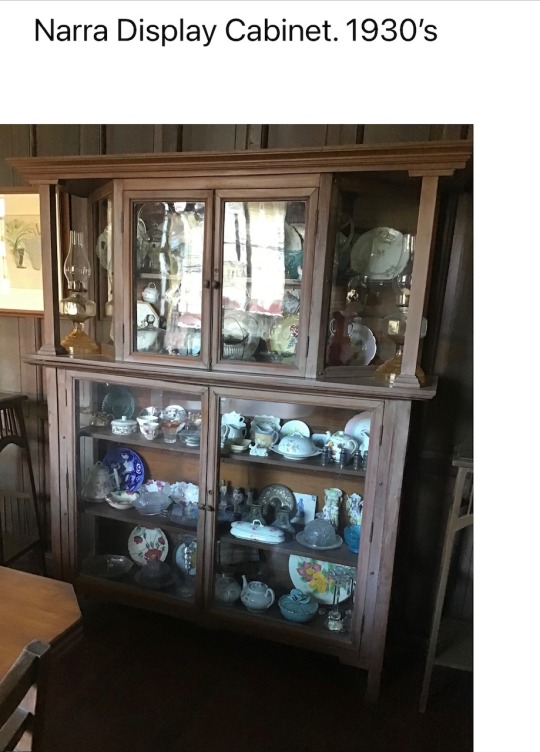
Display Cabinet
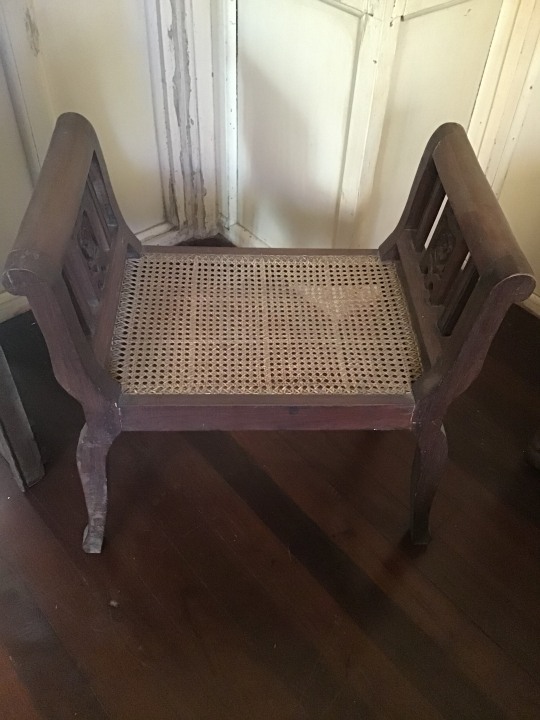
Narra Chair

Dining Table

Narra night table
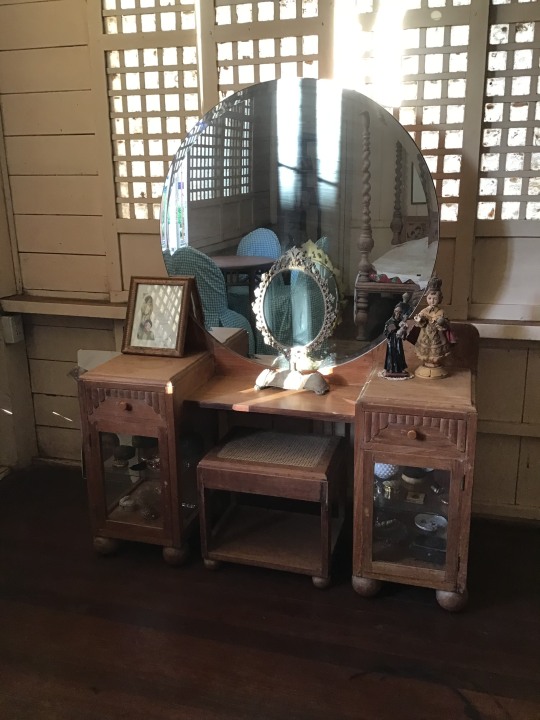
Narra dresser or “tocador” with a stool

Narra pillow rack. Probably 1930’s. Now used for displaying pictures.

Narra Table
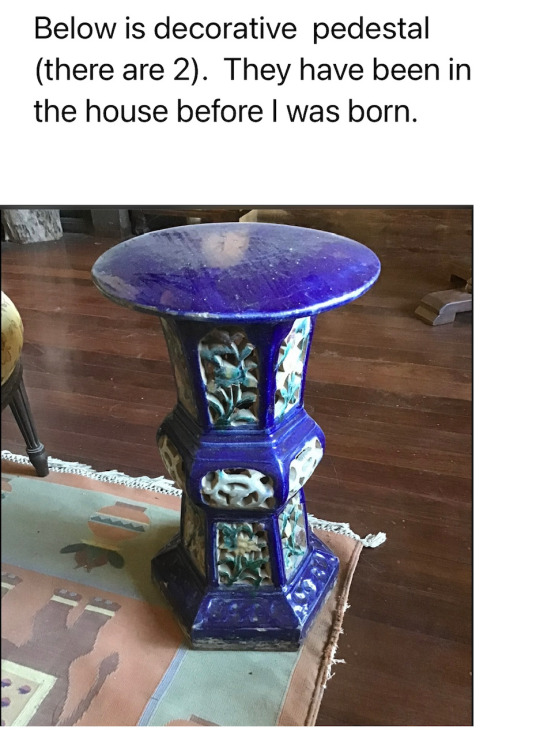
Antique Decorative Pedestals
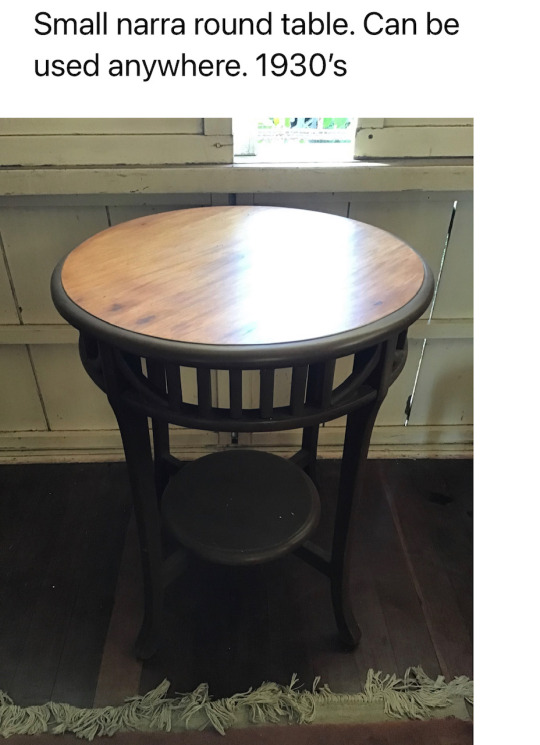
Narra Table
#pilalaguna#pila laguna#pila laguna history#philippine history#pila laguna town#pila laguna museum#pila laguna church#pila laguna philippines#pila laguna ancestral houses#pila laguna heritage houses#Corazon Rivera Ancestral House
0 notes
Text
The Spring Well of Pila

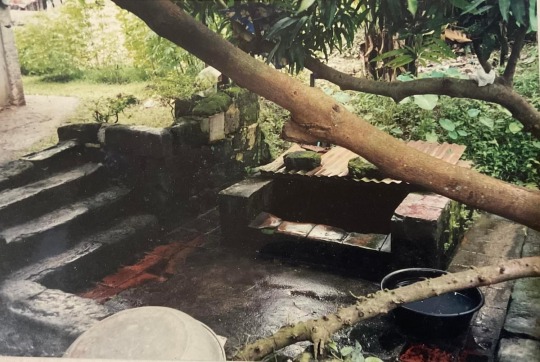
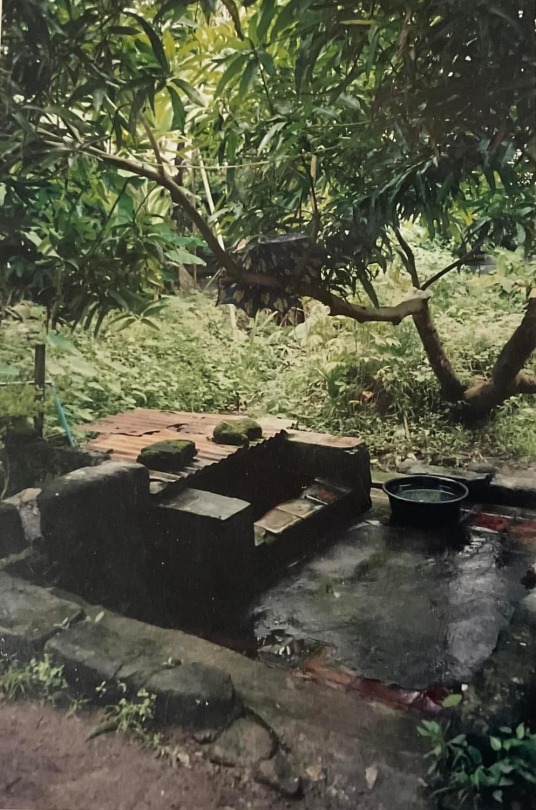
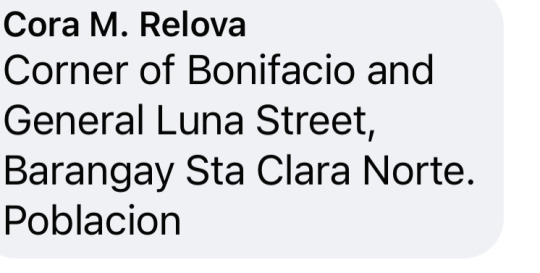
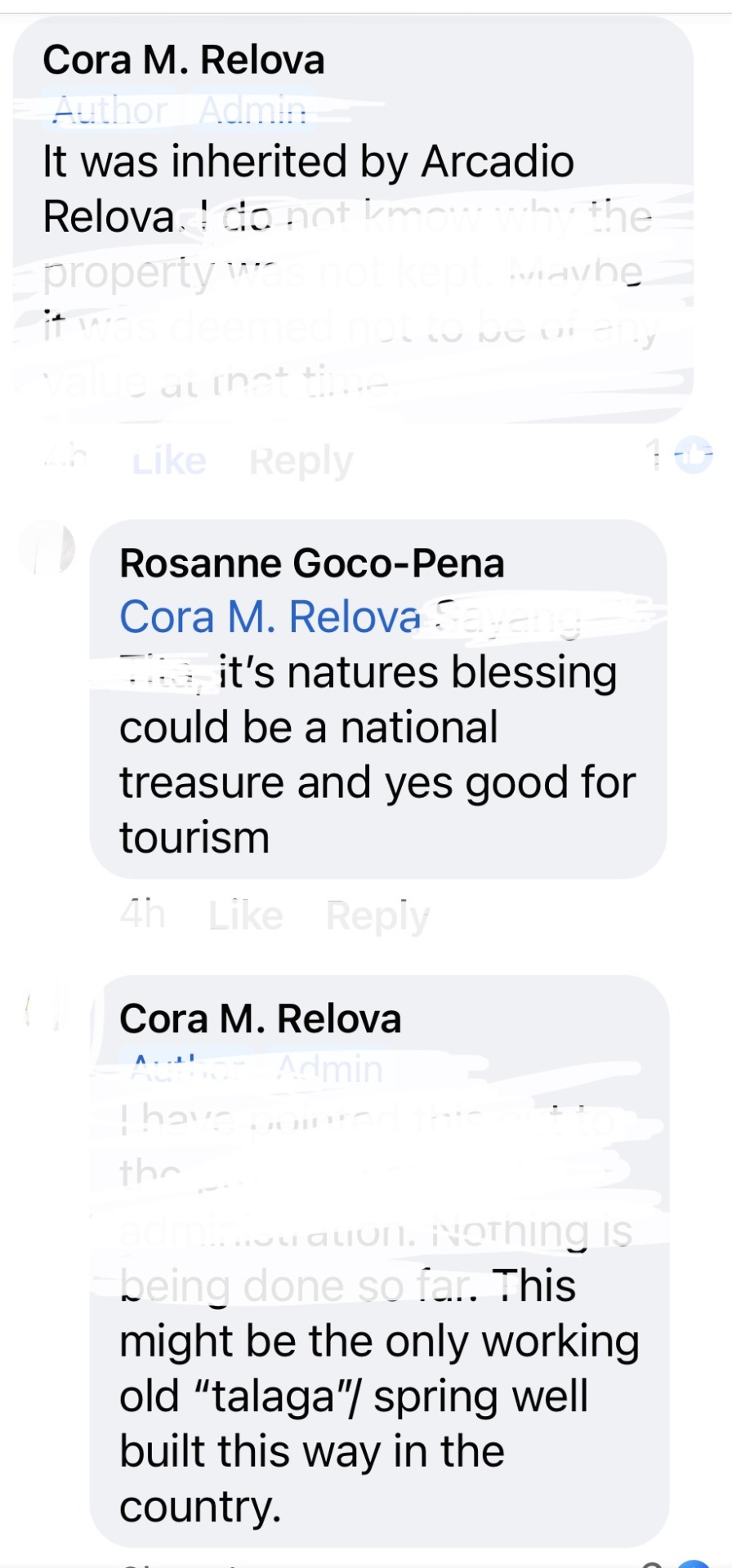
#pilalaguna#pila laguna#pila laguna history#philippine history#pila laguna town#pila laguna museum#pila laguna church#pila laguna philippines#pila laguna ancestral houses#pila laguna heritage houses#pila laguna spring well#pila laguna artifacts
0 notes
Text
Life in the Corazon Rivera Ancestral House
From Cora Relova of the Pila Historical Society Foundation and granddaughter of Corazon Rivera:
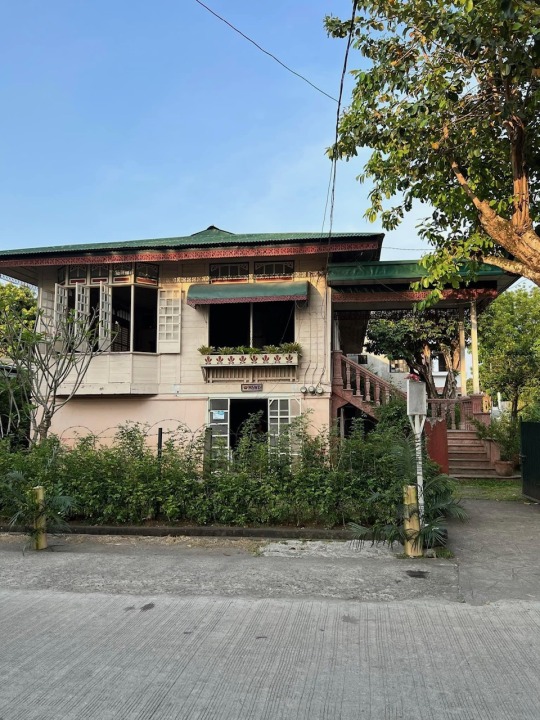
Lola’s house (Corazon Rivera Ancestral House) is considered ancestral because it is more than 50 years old and still belongs to the fourth generation of the family. It is a heritage house because the architecture belongs to a certain period and it is inside the declared (Philippine National) heritage zone. It is “taga-gitna” (people with houses in the center of the town surrounding the main plaza are elite).
It was built around 1929-1930. Lola Loring said she was 12 years old when they - Lola Azon (Corazon Rivera), Lolo Ato (Renato Del Mundo, son of Corazon Rivera) and Lola Loring (Loreto Del Mundo, daughter of Corazon Rivera) started living there. The old municipal hall (municipio) used to be located in the property. Lola Azon’s property was where the main municipal hall is located now. Lola Loring said that Lola Azon did not want to build the house directly in front of the church because she felt that the sins being confessed will "boomerang" back to the house or something like that. Can you imagine if she did not exchange her property….we will be in the center of the town plaza.
Anyway, there was no architect hired and Lola Azon was assisted by her nephew Felimon Rebong ("Lolo Imon") who was an engineer, or still an engineering student at that time. The house was built during the American period so it is called a chalet. It had plumbing and electricity. For better air flow the windows were big and surrounded the house. The lower portion of the windows had “ventanillas” (little windows) covered with wooden sliding doors which can be opened too. The upper portion of the walls had open wood carvings.
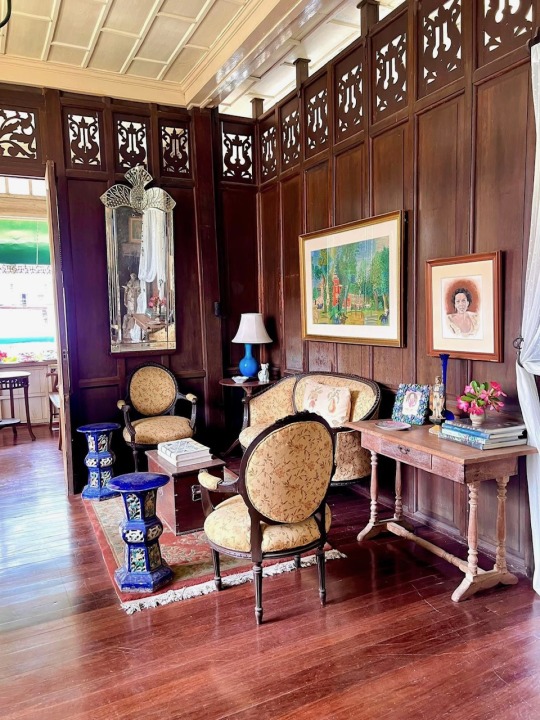

On the landing of the main stairs is the “balcon” (balcony) where one can sit to view the plaza. Aside from the main door there is also a door that leads to the first room. There were three rooms before with small doors leading to each room (the word “privacy” did not exist). The first one that opens to the balcon was occupied by Tita Jovit (Jovita, Cora's sister) and myself. The second one that opens to the sala/living area was occupied by Lola Azon and Tio Ato and family when they visited and the third one which opens to the comedor/dining area was occupied by Lolo Judge (Ramiro Relova, Loreto's husband) and Lola Loring. The 3rd room has a door that connects to the toilet/bath. (I recently had a division made to make the toilet separate from the bath during the renovation of the house).
There is no partition between the sala and comedor. When we were young a cabinet was used as partition. The front of the cabinet faced the dining room. The back of the cabinet faced the living room and the old piano was placed there. Actually the furniture pieces were moved around. The location of the living room set now is the best placement.
There was a sliding door that was the partition between the dining room and the kitchen. The kitchen was smaller until Lola had it renovated. We had no gas or electric stove. We had a “Kalan” (clay stove) that was made of ash. Charcoal, firewood and “bunot” (coconut husk) were used as fire. I remember that there were three parts so three dishes can be cooked at the same time. Can you imagine how hard it was then? Often there was a lot of smoke but there was a continuous flow of air then so it was not so bad. It is said that the food taste better with this method of cooking.There was also a storage room in the kitchen for (rice) “bigas”, salt etc. and I think a motor to pump water up the house. The pipes of the house was connected to free flow water fountain in the plaza. There was a stair in front of the toilet/bath used to go down to the first floor “silong” (basement).
The “silong” was where the "katulong" (household help) stayed, where the “sampayan” (clothes line when it rains) was, and the “bodega” - storage for the newly harvested and unmilled rice” palay”. Large blocks of ice were also stored there, covered by palay husks (and they never melted!) Lola Loring also had pens for hens that laid eggs and chickens for our food. I hardly went down because the flooring was not yet cemented and it was a bit dark.
Lola Azon planted a number of fruit trees. We had macopa (java apple), suha (grapefruit), lanzones (similar to lychee), balimbing (star fruit), duhat (java plum), santol (cotton fruit) and yambo (plum apple). Only the macopa (as old as the house) and the balimbing survives. The duhat in front of the house (by the gate) is only around 20 years old.
There was a “labahan” wash area for clothes at the back of the house. There was a continuous flow of water because of the pipe that was connected to the free flow fountain. There was a huge “kawa” or cauldron where the water fell and we (Tita Jovit and Tito Vic - Vic Del Mundo, Cora's first cousin and son of Renato Del Mundo) used to pretend “swim” or just fooled around and bothered the lavandera (washer woman) . Sadly, I do not know what happened to the “kawa”.
General cleaning of the house was done twice a year, certainly before the Flores de Mayo and I think after the New Year. Wives of tenants would come (around 4 ladies) and would work for free but they are fed very well and given travel fare and rice to bring home. It is called “panunulungan”. The ladies used “is-is” (ficus leaves) to scour the “pasamano” (window sill) and the floor before waxing. They used “walis na tingting” (broomstick) for the ceiling, walls, iron works followed by “basahan” (rag) soaked in water with soap in “palangana” (basin). I think it took them 2 days to clean everything. Then a male "katulong" (hired help) would wax the floor manually (very labor-intensive), then used “bunot” (coconut husk) to make it shine “lampaso”. I loved the smell of floor wax and the super clean house. One of the ladies was Aling Dulay who loved to bring Michael (Cora's son) fresh eggs.
I also remember that there was a carpet for the sala set. For cleaning the help would hang it on two chairs on the sidewalk in front of the house and beat it with a walis na tingting (broomstick). The lavandera (washerwoman) would also use the sidewalk to sun-dry clothes before rinsing.
Lola Azon would sweep the leaves on the ground with “walis tingting” everyday at around 4pm and I loved helping her. The leaves were piled up and burned because it drove the mosquitoes away. Every household did it. But in modern times, due to global warming and fumes, the municipal government forbade the burning of anything.
The wood used for the building of the house was mainly narra. Lola Loring (Loreto Del Mundo, daughter of Corazon Rivera) said that the panels with carvings that divides the rooms from the sala and comedor were made in Paete, Laguna. The windows in the rooms are made of wood with capiz shells. The flooring is also made of narra planks and the ceiling is made of wide solid narra. I remember that the materials used for the lower portion were not sturdy so it was cemented to better support the house.
After lunchtime and cleaning the kitchen was done, the help would iron clothes in the kitchen area with a plantsadora (iron). I remember that before the electric iron a heavy metal contraption with wood handle filled with burning charcoal was used (now considered an antique). The help would also listen to telenovelas on the radio. We were required to have an afternoon nap “siesta”, and we laid on banigs (woven mast) spread out in the living room.
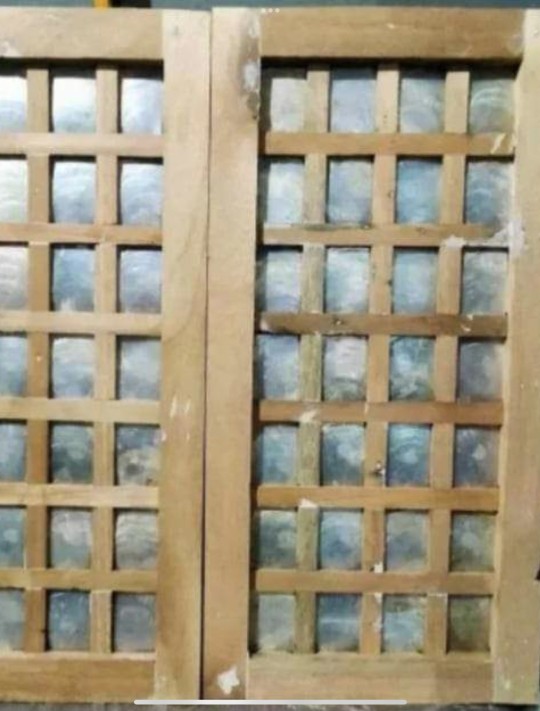
Capiz Shell Window
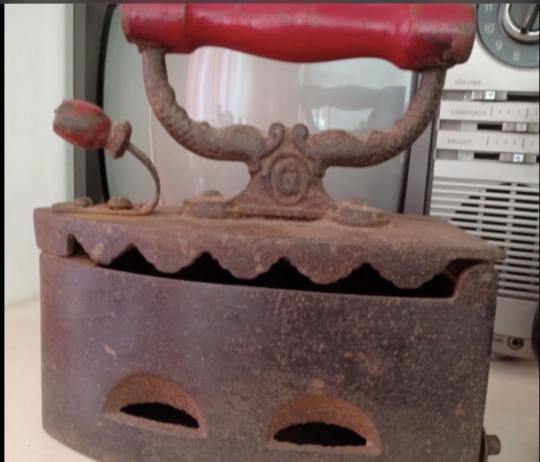
Plantsadora (Iron), image from Cora Relova
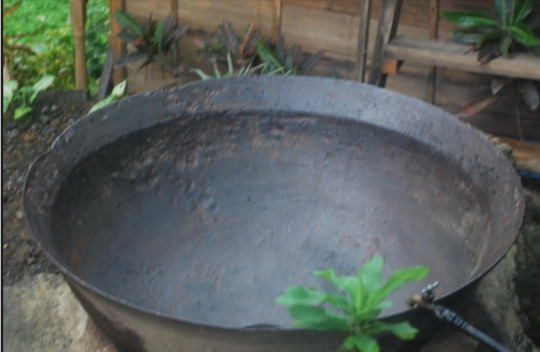
Image of a Kawa, uncredited photo
#pilalaguna#pila laguna#pila laguna history#philippine history#pila laguna town#pila laguna museum#pila laguna church#pila laguna philippines#pila laguna ancestral houses#pila laguna heritage houses#Corazon Rivera Ancestral House
3 notes
·
View notes
Text
Corazon Rivera Ancestral House: Garden
From Cora Relova of the Pila Historical Society Foundation:
Our garden had a lot of flowers mostly planted along the fence and around the main stairs. A thick bougainvillea plant covered the upper portion of the stairs (sadly it was removed because of termites).
There were lots of butterflies and 3 kinds of dragonflies “tutubi” in Tagalog - big and medium. The small ones (damselflies) were called “tutubing karayom” (needle). Lots of frogs croaking and crickets (kuliglig) chirping can be heard throughout the night. Since there were many trees bats who love to eat the fruits, they would go into the house. The helps would chase them out with walis na tingting (broomsticks). Lots of lizards crawled all over the ceiling and they would eat all the insects that came their way. There was also papua plants below the windows. It was used for sunning pillows and mats (banigs) to remove molds and odors.
Lola Azon (Corazon Rivera) planted a number of fruit trees. We had macopa (java apple), suha (grapefruit), lanzones (similar to lychee), balimbing (star fruit), duhat (java plum), santol (cotton fruit) and yambo (plum apple). Only the macopa (as old as the house) and the balimbing survives. The duhat in front of the house (by the gate) is only around 20 years old.
Sadly grasshoppers are gone due to pollution.


#pilalaguna#pila laguna#pila laguna history#philippine history#pila laguna town#pila laguna museum#pila laguna church#pila laguna philippines#pila laguna ancestral houses#pila laguna heritage houses#Corazon Rivera Ancestral House#Pila Laguna Plants
0 notes
Text
Corazon Rivera Ancestral House: Furniture
From Cora Relova of the Pila Historical Society Foundation: According to Lola Loring (Loreto Del Mundo Relova, daughter of Corazon Rivera) this European style sala set composed of a sofa, 2 armchairs and 3 chairs was purchased during the Japanese occupation (around 1943) by Lola Azon (Corazon Rivera's nickname) from a Spanish couple who lived in Ermita, Manila. The set was a wedding gift to them. They had recently celebrated their 50th wedding anniversary and decided to go back to Spain. So the set is around 130 years old. It was reupholstered 3 times and the last one was around 2015. I chose the material and bought it with Tita Jovit (Cora's sister) at a store for curtains and upholstery in Manila. The upholstery was done by the sister of Lek (Annie’s husband - Cora's niece). It is in delicate condition so I did not allow it to be used during film and commercial shoots. Interior and furniture designer Budji Layug said that the set has perfect proportion. The dining chairs made of narra used to be in our house in San Lorenzo Village, Makati.

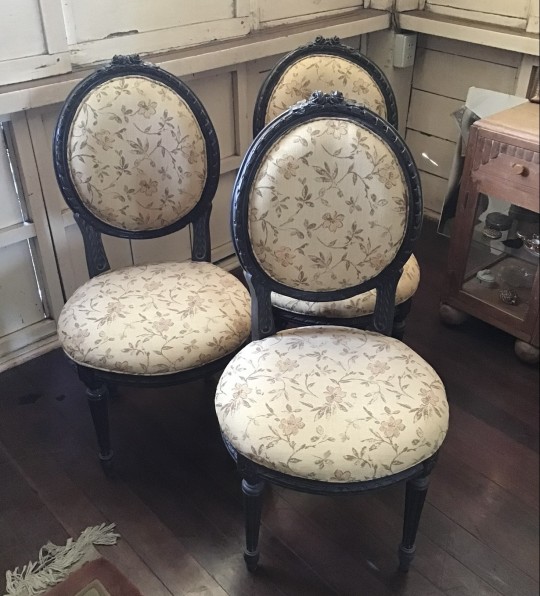





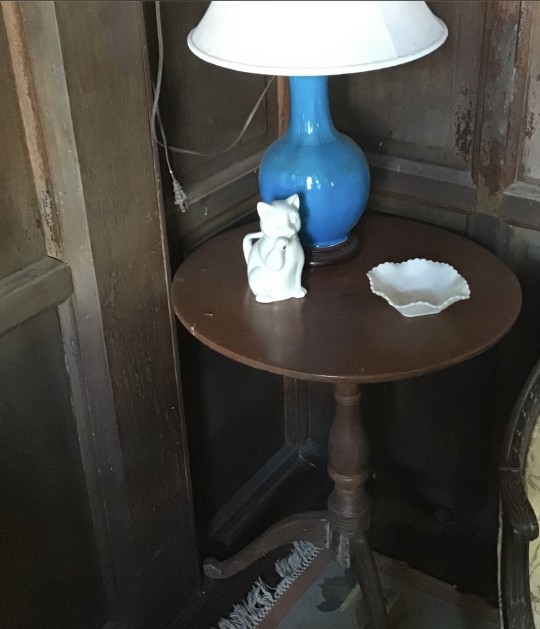
Tables are made of narra wood and probably 1920s-1930s. The small rectagular table is called Narra Lamesita.
#pilalaguna#pila laguna#pila laguna history#philippine history#pila laguna town#pila laguna museum#pila laguna church#pila laguna philippines#pila laguna ancestral houses#pila laguna heritage houses#Corazon Rivera Ancestral House
1 note
·
View note
Text
Pila Videos
La Noble Villa De Pila (part 2 of 2) - Travel Time with Susan Calo-Medina
LOREN LEGARDA: Dayaw Season 8 Episode 4 - "A Future rooted in the Past" (Biñan and Pila in Laguna)
#pilalaguna#pila laguna#pila laguna history#philippine history#pila laguna town#pila laguna museum#pila laguna church#pila laguna philippines#pila laguna ancestral houses#pila laguna heritage houses
0 notes
Text
Easter Sunday in Pila, Laguna, 1975
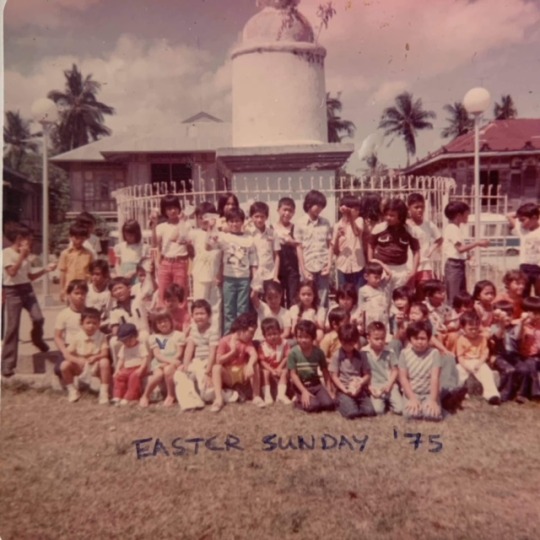
Easter eggs used to be hidden in the town plaza for the ancestral family children. Pila's online museum curator is pictured as a child in the blue and white dress 4th from the left, top row.
#pilalaguna#pila laguna#pila laguna history#philippine history#pila laguna town#pila laguna museum#pila laguna church#pila laguna philippines#pila laguna ancestral houses#pila laguna heritage houses#pila laguna town plaza
1 note
·
View note
Text
Pila Trivia 1

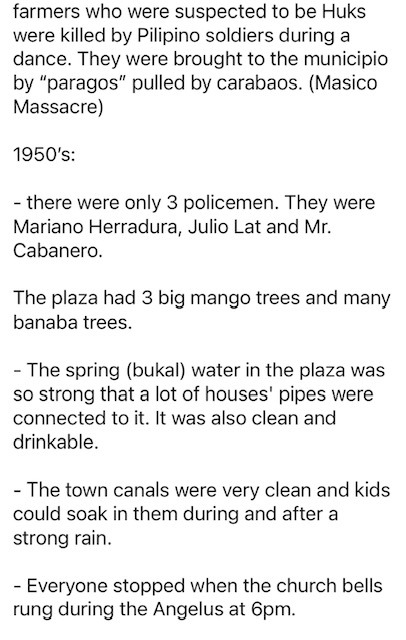
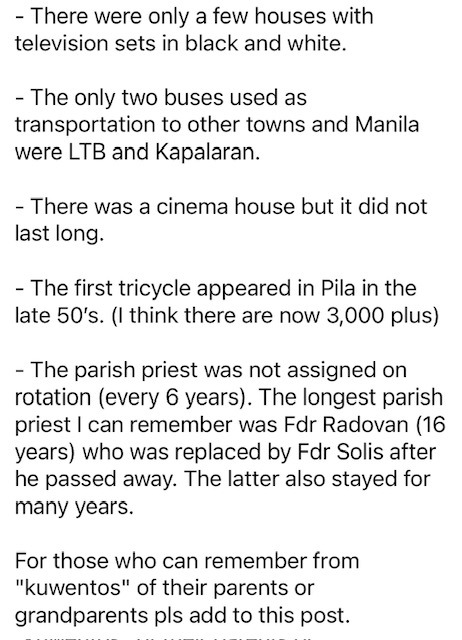
#pilalaguna#pila laguna history#pila laguna#philippine history#pila laguna town#pila laguna museum#pila laguna church#pila laguna philippines#pila laguna ancestral houses#pila laguna heritage houses#pila laguna trivia
0 notes
Text
Pedro del Mundo Family History
Pedro del Mundo was the husband of Corazon de Rivera, the direct descendant of the founder of Pila, Don Felizardo de Rivera.
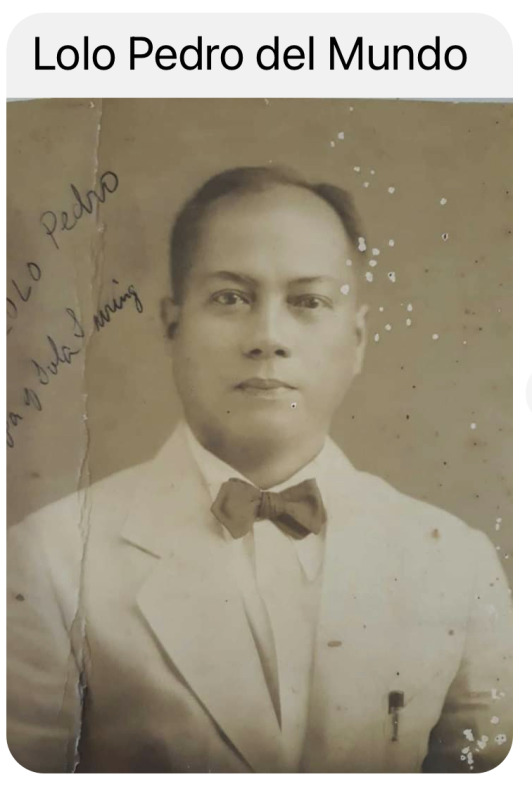
Pedro del Mundo was a former mayor and governor of Boac, Marinduque, Philippines.
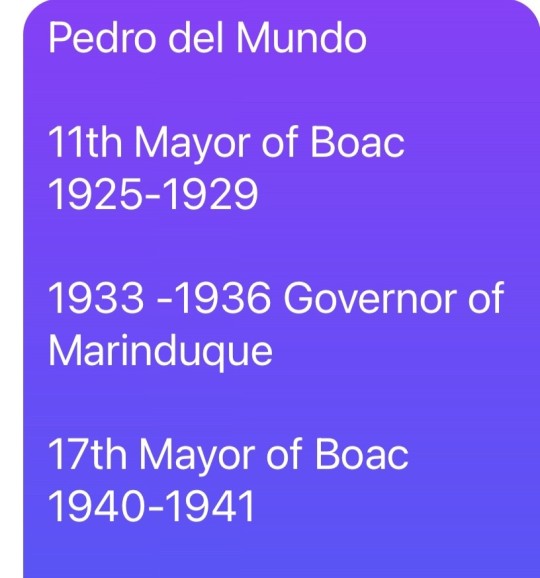
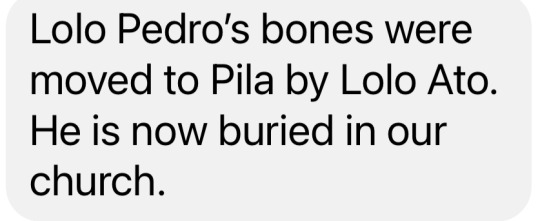
Pedro del Mundo's remains were interred in the Pila Church by his son, Renato "Lolo Ato" del Mundo.
He is the father of Loreto del Mundo Relova who married former Pila Judge Ramiro "Raming" Relova and Renato "Ato" del Mundo who married Marina Llamas, sister of Virginia Llamas Romulo, wife of Carlos P. Romulo, Former President of the United Nations General Assembly in 1949 to 1950 and as president of the UN Security Council in 1957, 1980 and 1981.
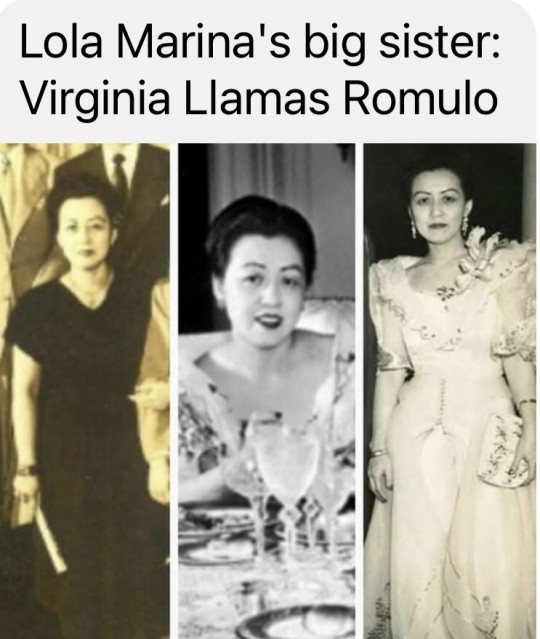
There is a Del Mundo family plot in Boac, Marinduque. Photos from Cora Relova and Jheng Miranda.
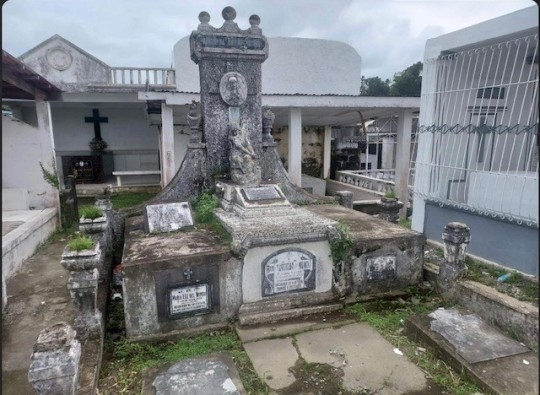




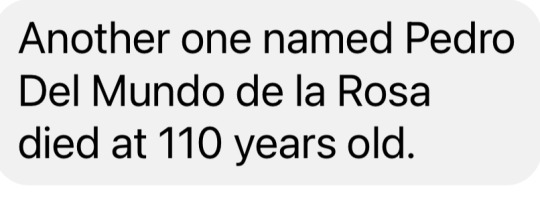


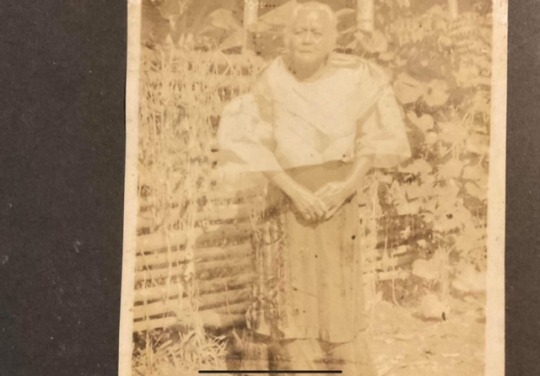

Tomas del Mundo was the municipal president of Boac, 1901.
Pedro del Mundo and María Meléndez had a son, Remigio del Mundo y Meléndez.
Remigio del Mundo married Martiniana Lualhati and had a son, Don Bernardo Lualhati del Mundo who was a Filipino lawyer and politician with the Philippine Assembly from October 16, 1912 to October 16, 1916.
Bernardo del Mundo married Paz Villanueva del Mundo and had a daugher, Fé Primitiva del Mundo y Villanueva who was a Filipina pediatrician and founder of the first pediatric hospital in the Philippines. She was born on November 27, 1911 in Intramuros, Manila, Philippines and died August 6 2011 (aged 99), in Quezon City, Philippines.
Fe del Mundo is the second cousin of Loreto del Mundo Relova, daughter of Corazon de Rivera, wife of Pedro del Mundo. Maria Luz del Mundo is the mother of Pedro del Mundo.

Marina Del Mundo, wife of Renato "Ato" Del Mundo. Photo from Bel Tomas Ranosa.
#pilalaguna#pila laguna#pila laguna history#philippine history#pila laguna town#pila laguna museum#pila laguna church#pila laguna philippines#pila laguna ancestral houses#pila laguna heritage houses
0 notes
Text
Ruins of Old Stairs


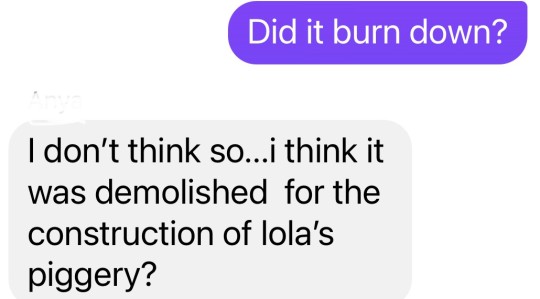
Old stairs from an old house in the backyard of the Corazon Rivera Heritage House.
#pilalaguna#pila laguna#pila laguna history#philippine history#pila laguna town#pila laguna museum#pila laguna church#pila laguna philippines#pila laguna ancestral houses#pila laguna heritage houses
0 notes
Text
The Practice of Manda


"Manda" is the old practice of setting aside money and "budgeting" to pay for masses for the ancestors.
#pilalaguna#pila laguna#pila laguna history#philippine history#pila laguna town#pila laguna museum#pila laguna church#pila laguna philippines#pila laguna ancestral houses#pila laguna heritage houses#pila laguna traditions
2 notes
·
View notes
Text
How to address a Datu of Pila
Source: SCOTT, WILLIAM HENRY. “Filipino Class Structure in the Sixteenth Century.” Philippine Studies, vol. 28, no. 2, 1980, pp. 142–75. JSTOR, http://www.jstor.org/stable/42632521. Accessed 12 Feb. 2024.


#pilalaguna#pila laguna#pila laguna history#philippine history#pila laguna town#pila laguna museum#pila laguna church#pila laguna philippines#pila laguna ancestral houses#pila laguna heritage houses#pila laguna datu#datu of pila laguna#philippine datu#datu salian maguinto of pila laguna
1 note
·
View note
Text
Datu of Pila in Filipino Class Structure by William Henry Scott
Source: SCOTT, WILLIAM HENRY. “Filipino Class Structure in the Sixteenth Century.” Philippine Studies, vol. 28, no. 2, 1980, pp. 142–75. JSTOR, http://www.jstor.org/stable/42632521. Accessed 12 Feb. 2024.

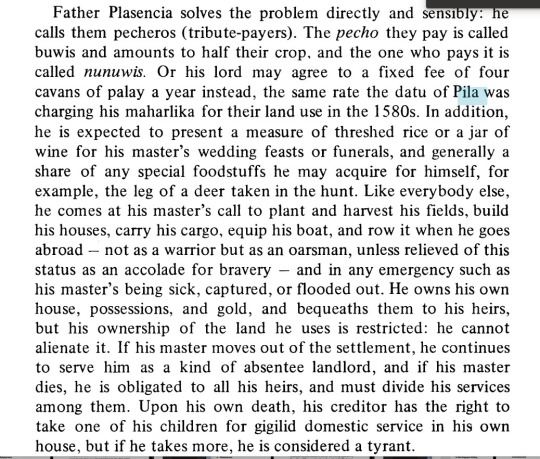

#pilalaguna#pila laguna#pila laguna history#philippine history#pila laguna town#pila laguna museum#pila laguna church#pila laguna philippines#pila laguna ancestral houses#pila laguna heritage houses#datu of pila laguna#ancient pila laguna#ancient pila project#ancient nobility of Pila Laguna
0 notes
Text
Pila mentioned in Precolonial Tagalog Counting and Marking Time Research
Source: WOODS, DAMON L. “Counting and Marking Time From the Precolonial to the Contemporary Tagalog World.” Philippine Studies, vol. 59, no. 3, 2011, pp. 337–65. JSTOR, http://www.jstor.org/stable/42634686. Accessed 12 Feb. 2024.



#pilalaguna#pila laguna#pila laguna history#philippine history#pila laguna town#pila laguna museum#pila laguna church#pila laguna philippines#pila laguna ancestral houses#pila laguna heritage houses#ancient pila laguna
1 note
·
View note
Text
Pila’s Ancient Jar Burials
Source: Bulbeck, David. “Traditions of Jars as Mortuary Containers in the Indo-Malaysian Archipelago.” New Perspectives in Southeast Asian and Pacific Prehistory, edited by David Bulbeck et al., vol. 45, ANU Press, 2017, pp. 141–64. JSTOR, http://www.jstor.org/stable/j.ctt1pwtd26.15. Accessed 11 Feb. 2024.
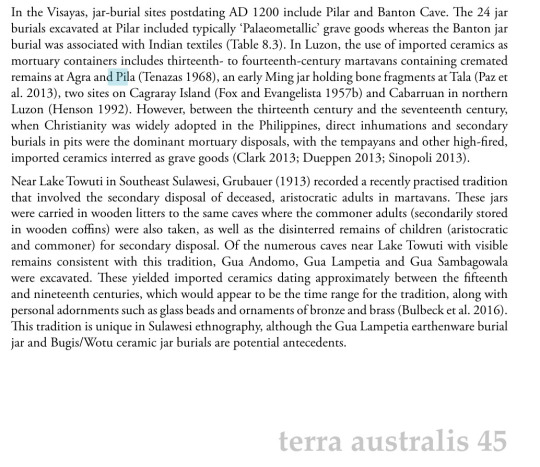
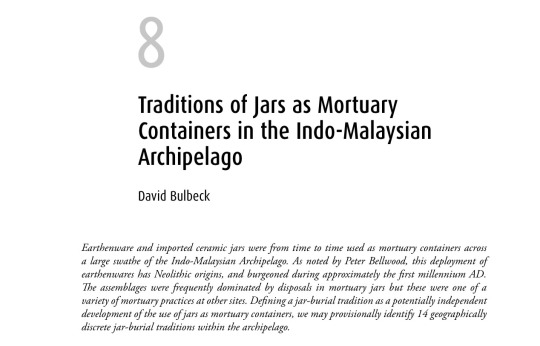
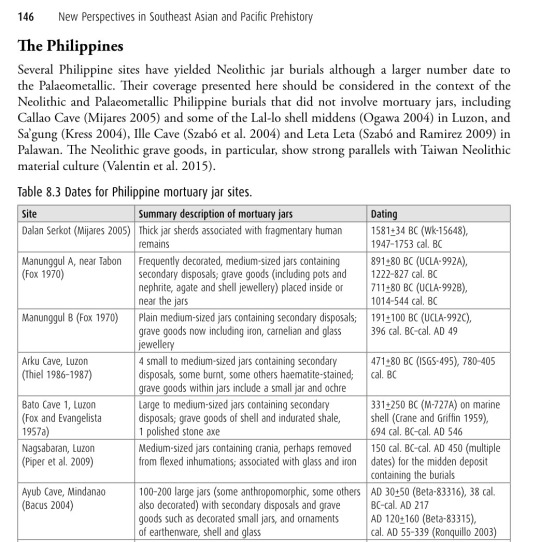
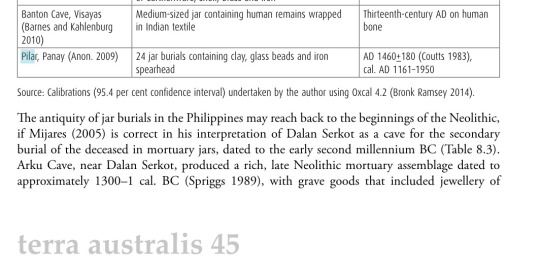
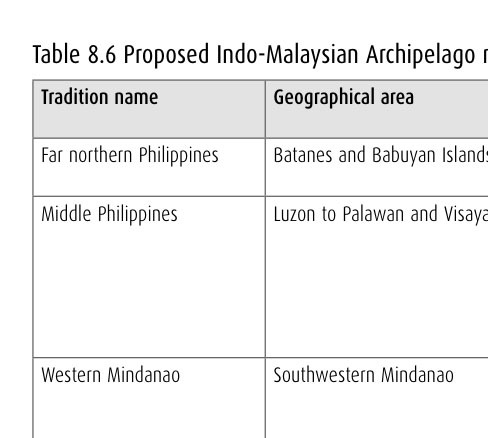
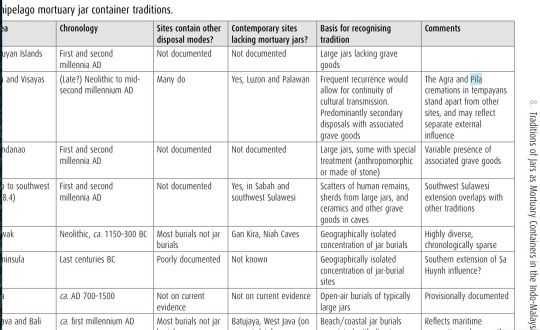

#pilalaguna#pila laguna#pila laguna history#philippine history#pila laguna town#pila laguna museum#pila laguna church#pila laguna philippines#pila laguna ancestral houses#pila laguna heritage houses#ancient pila laguna#prehispanic pila laguna
0 notes
Text
Property Tax rates in Pila, Laguna, Philippines in 1909

It was between 80 and 1,000 Philippine Pesos. 80 pesos would be equivalent to $35 USD.
#pilalaguna#pila laguna#pila laguna history#philippine history#pila laguna town#pila laguna museum#pila laguna church#pila laguna philippines#pila laguna ancestral houses#pila laguna heritage houses
0 notes